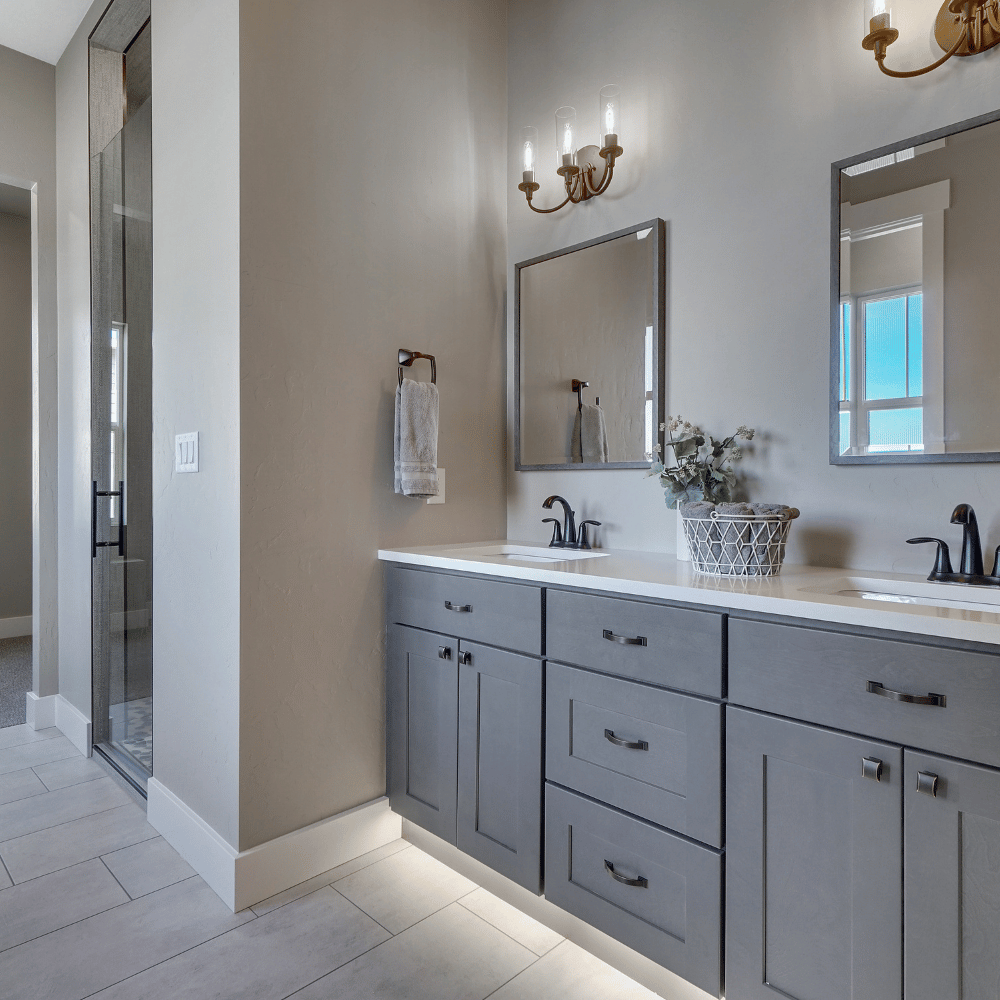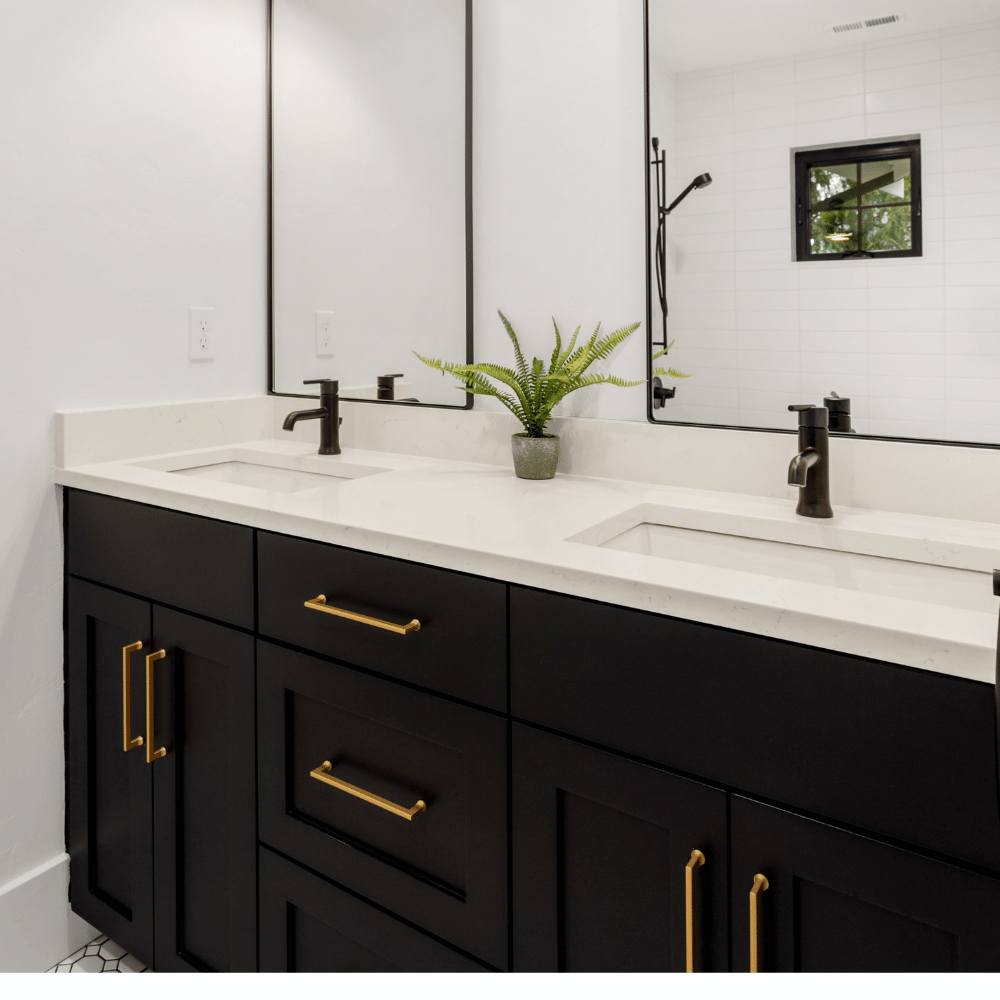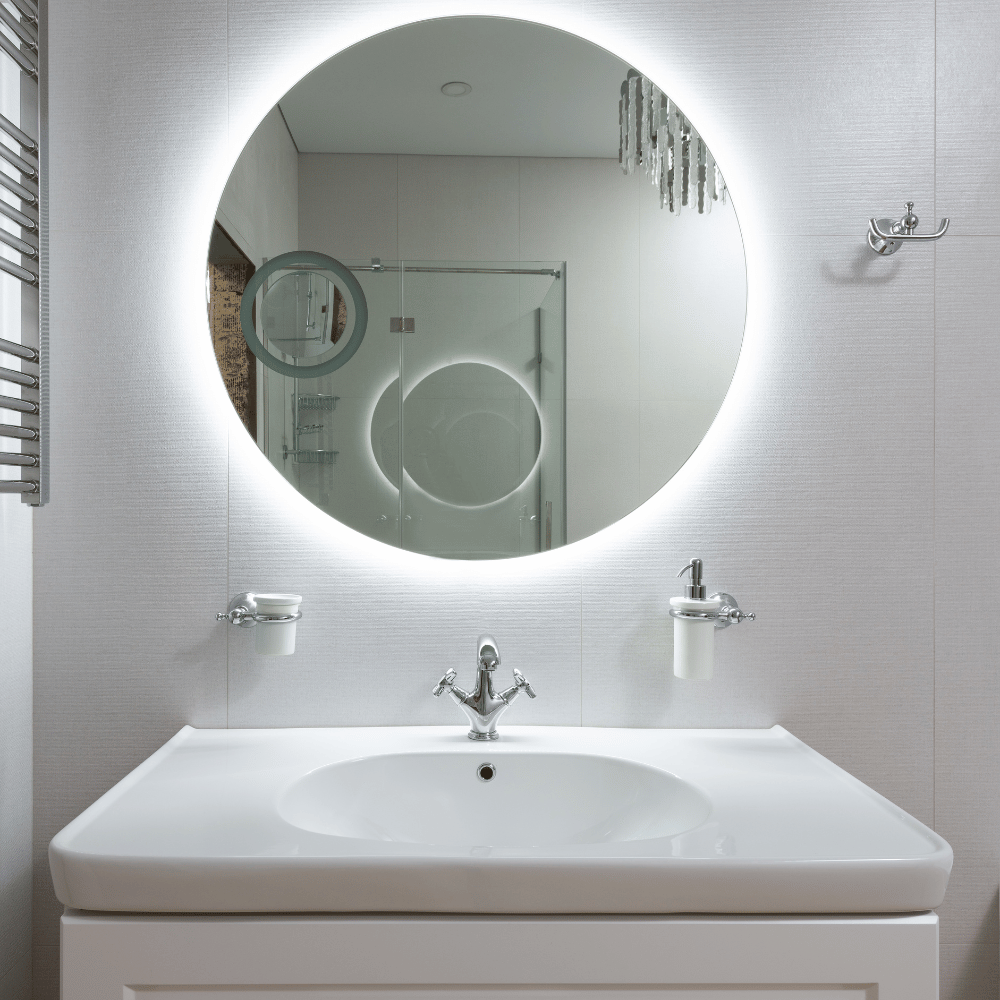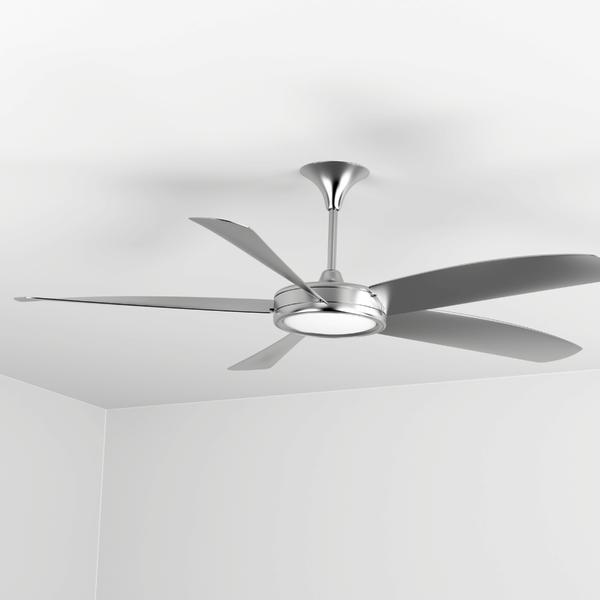Choosing the best bathroom paint means finding a blend of moisture resistance and aesthetic charm. Confront the challenge of humid spaces with our concise guide on paints that promise endurance against steam, splashes, and mold. The article offers a targeted rundown of the most reliable paint types, finishes, and brands. Prepare to arm your bathroom walls with a coat that is both protective and pleasing to the eye, without wading through unnecessary detail.
Key Takeaways
- Semi-gloss paint is often recommended for bathrooms due to its water-resistant properties and ease of cleaning. Selecting paint formulated for high-humidity environments is crucial to prevent peeling and discourage mold and mildew growth.
- Latex paint is preferred for bathrooms over oil-based paints for environmental safety, moisture resistance, and durability. The choice of paint finish—from flat to high-gloss—affects both the durability and appearance of the bathroom walls.
- Top bathroom paint brands like Sherwin-Williams, Benjamin Moore, and PPG offer products with moisture resistance and mold prevention qualities. Key considerations when choosing bathroom paint include moisture resistance, mold and mildew prevention, and the visual impact of color and finish.
Choosing the Right Paint for Your Bathroom
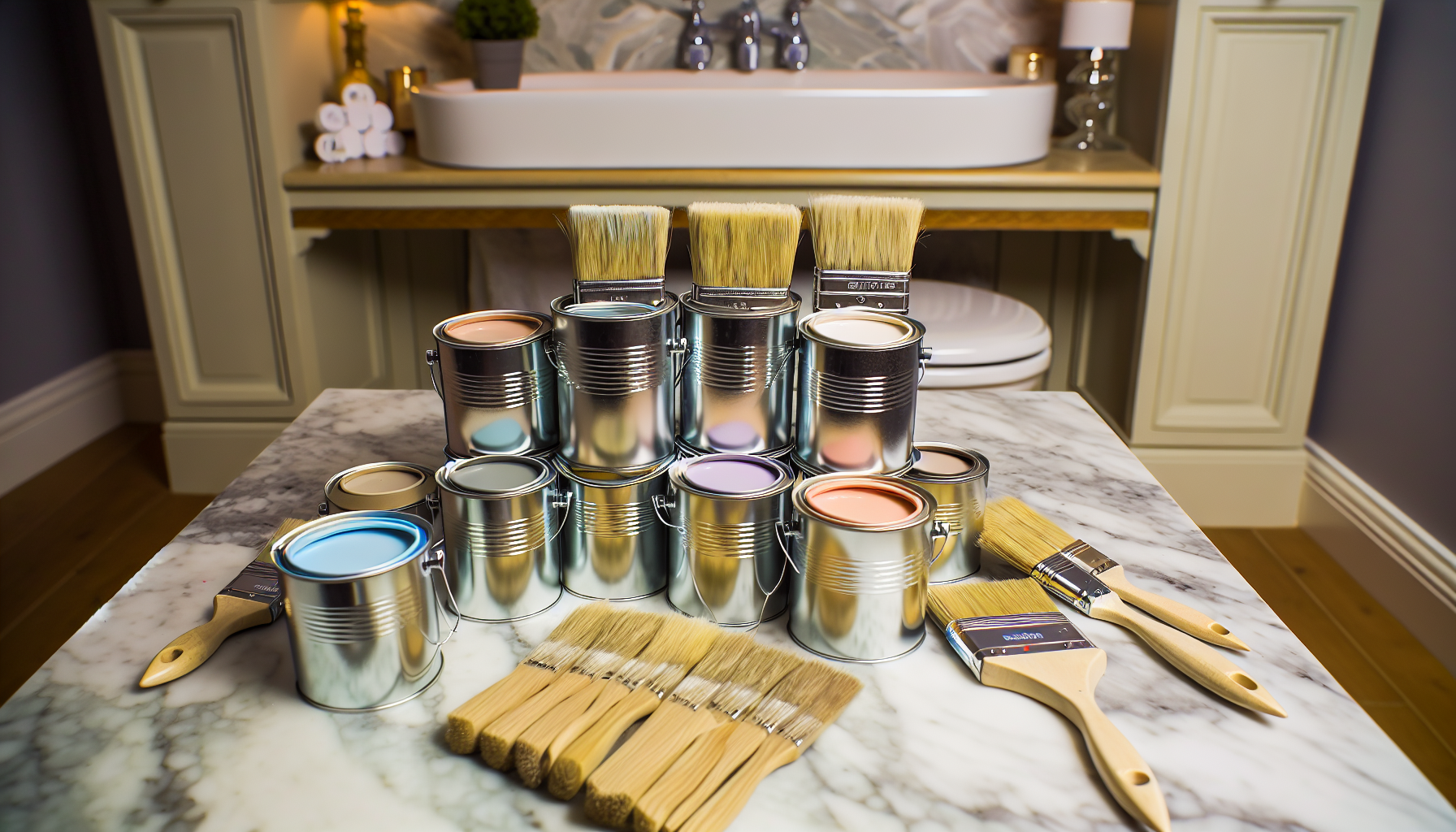
Bathrooms, unlike other rooms in your home, are subject to high levels of humidity and moisture. This environment necessitates the use of specially formulated paints that can withstand these conditions without peeling, discoloring or fostering the growth of mold and mildew. While there are several types of paints suitable for bathroom walls, semi-gloss paint is particularly versatile due to its water-resistant properties and ease of cleaning.
Opting for a paint specifically labeled for bathrooms ensures its ability to withstand high-humidity environments. The commonly recommended paint types for bathroom walls are:
- Flat paint
- Eggshell
- Satin
- Semi-gloss
Some premium eggshell or matte paints may even offer moisture-resistant properties. However, the choice of paint type, finish, and even the use of primers can significantly influence the durability and aesthetics of your bathroom.
Latex vs. Oil-Based Paints
A clear understanding of the differences between latex and oil-based paints is beneficial when selecting the right paint for your bathroom. Latex paint is known for its moisture resistance, making it a popular choice for bathrooms. It creates a durable, long-lasting finish that can effectively resist moisture, preventing damage to your walls.
On the other hand, oil-based paints offer notable durability and moisture resistance, along with a smooth application and good coverage. However, it’s worth noting that while oil-based paints can provide a high-quality finish, they also release high levels of harmful VOCs into the air, posing potential health risks. Therefore, for a balance between environmental safety and moisture resistance, latex paint is often the preferred choice for bathrooms.
Gloss Levels: From Flat to High-Gloss
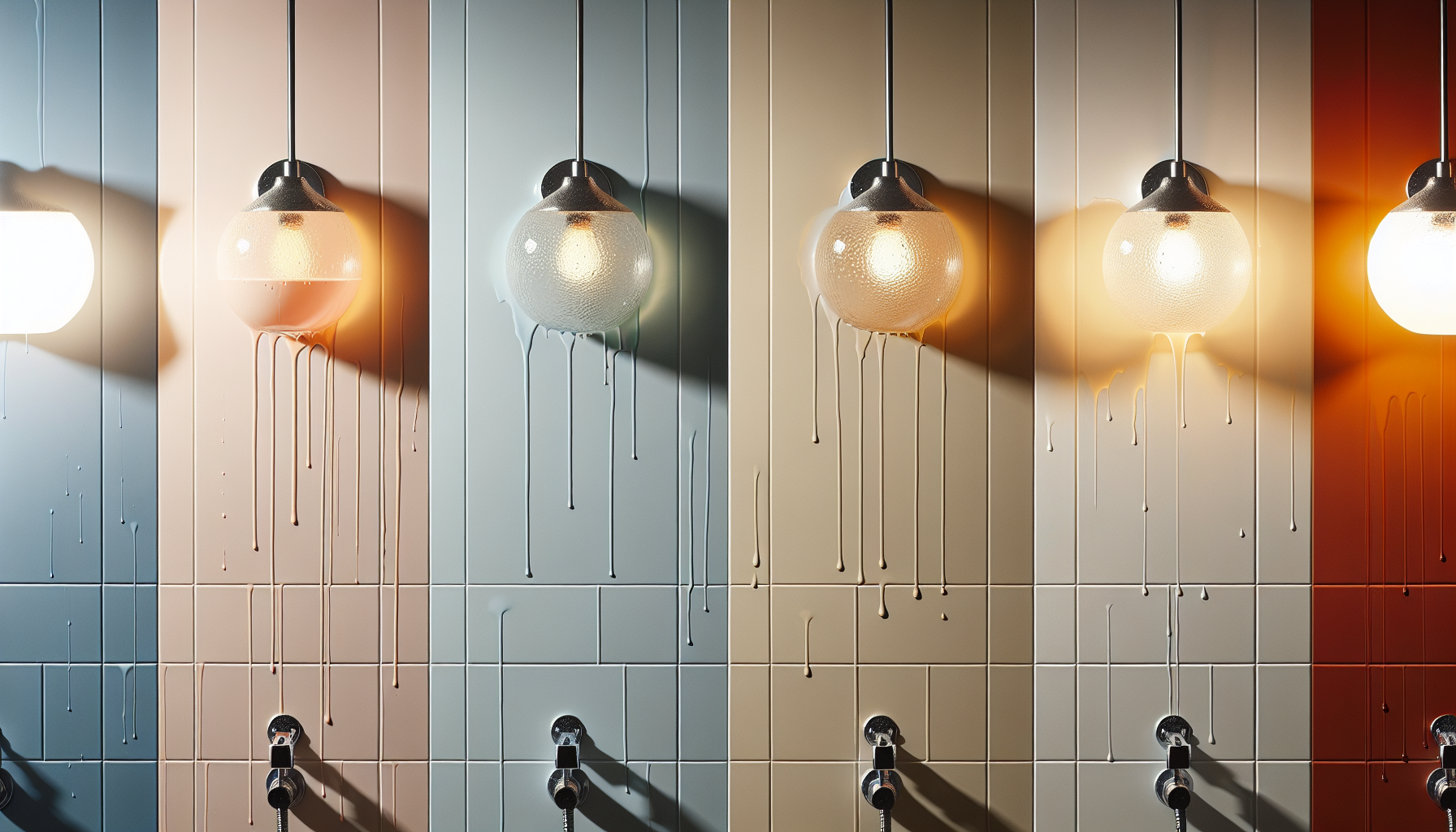
The finish of your bathroom paint significantly impacts both its functionality and aesthetic appeal. Gloss levels for bathroom paint range from flat to high-gloss, each offering a unique set of advantages and disadvantages. For instance, glossy finishes are favored for their superior moisture resistance, durability, and ease of cleaning, making them an ideal choice for bathroom cabinets and high-contact areas.
However, selecting the right gloss level is not only about functionality but also about aesthetics. Glossy finishes can enhance the reflective properties of your glossy paint, while matte and eggshell finishes can help conceal imperfections and offer a deeper color depth. But remember, higher gloss levels are more likely to reveal imperfections, and matte finishes may absorb moisture, potentially contributing to mold development. When choosing between gloss paints, including semi-gloss paints, consider both the practical and visual aspects to achieve the desired result.
The Role of Primers
Primers are vital in bathroom painting projects as they enhance paint adhesion, hinder mold growth, and provide a uniform adhesive undercoat to ward off stain seepage. They work by sealing the porous surfaces of your bathroom walls, creating a moisture-resistant layer that safeguards the wall and the paint from water damage.
When choosing a primer for your bathroom, consider options that contain mildewcide additives. These additives can inhibit the growth of mold and mildew, making your paint job more durable and longer-lasting.
Notably, a primer’s role is not limited to just preparing the surface for painting. It’s also essential in achieving a smooth, uniform, and durable paint finish.
Top Bathroom Paint Brands and Their Offerings
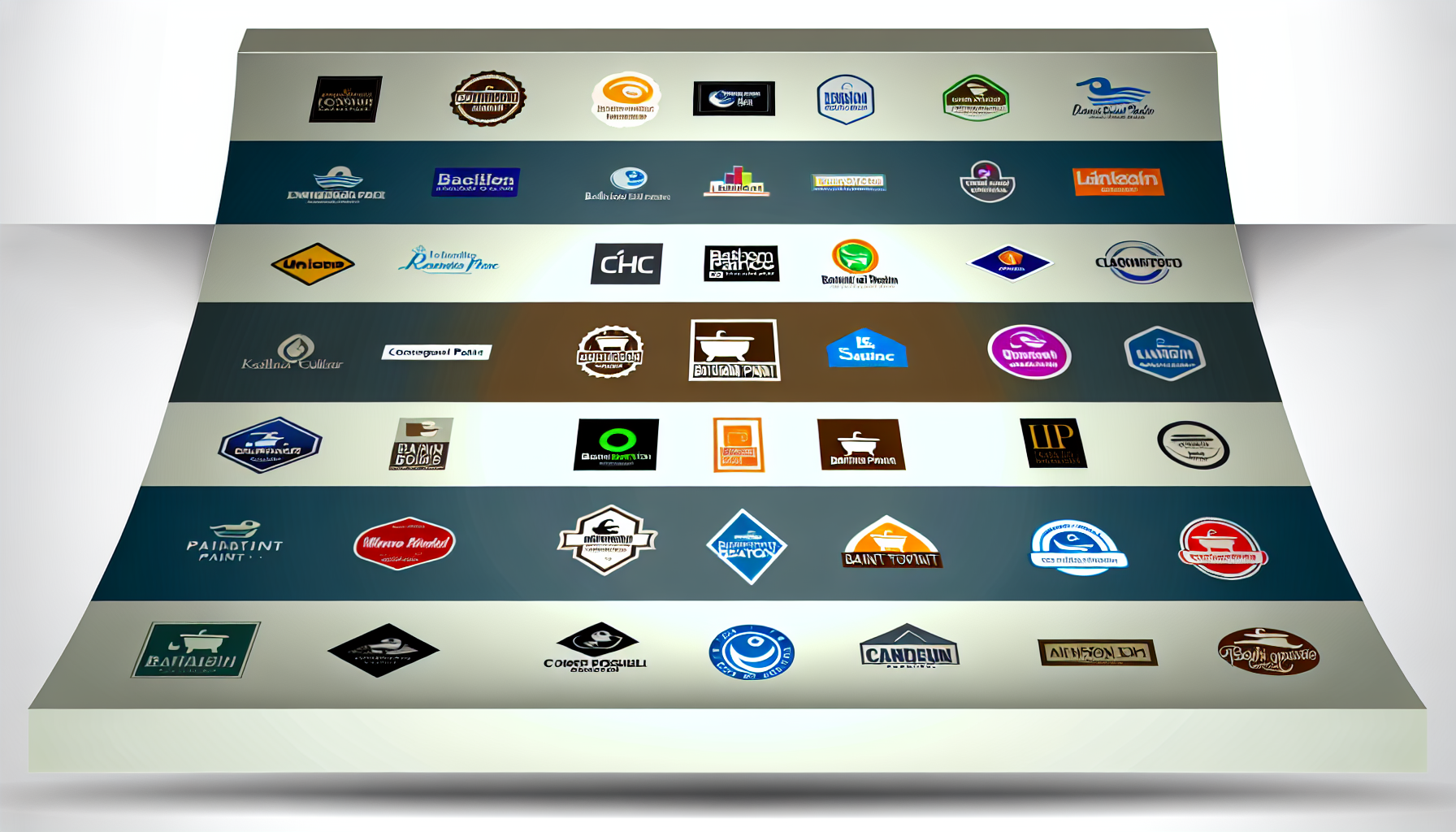
Having discussed the types of paints and gloss levels, we can now examine the top brands renowned for their high-quality bathroom paints. Paint brands vary in quality; hence, selecting a reputable brand can significantly influence the longevity, durability, and aesthetic appeal of your bathroom paint job. Here are some top brands to consider:
- Sherwin-Williams
- Benjamin Moore
- Behr
- Valspar
- Farrow & Ball
These brands are known for their wide range of colors, excellent coverage, and resistance to moisture and mildew.
Brands like Benjamin Moore, PPG, and Sherwin-Williams have made a strong reputation in the market for their durable and mold-resistant bathroom paints. Let’s explore each of these brands in more detail to understand what makes their offerings stand out in the crowded marketplace of bathroom paints.
Benjamin Moore
Benjamin Moore offers a range of high-quality bathroom paints, including low-sheen paint options, that are designed to withstand the demanding conditions of a bathroom environment. The satin paint finish Kitchen and Bath Paint and AURA Bath and spa paint are particularly noteworthy. These paints are not only durable and low-VOC, but they also come with mildew-resistant properties, making them an excellent choice for high-humidity environments.
The AURA Bath & Spa paint offers exceptional performance in high-humidity environments, such as bathrooms and spas. It provides:
- Mildew resistance to maintain a fresh appearance
- Durability in moist conditions
- A diverse range of color options to align with your bathroom’s desired aesthetic
PPG
Next in line is PPG, a brand known for its high-quality bathroom paints that are durable and moisture-resistant. Their Interior Manor Hall Paint is appreciated for its improved burnishing and exceptional durability, while the UltraLast Base 1 Semi-Gloss Interior Paint offers superior moisture resistance due to its advanced formulation that creates a protective barrier. Applying a fresh coat of this paint ensures long-lasting protection and a beautiful finish.
Not only do these paints withstand the high-moisture environment of bathrooms, but they also offer a smooth application process and good coverage with just one coat. What’s more, PPG bathroom paints are acknowledged for their cost-effectiveness and value, providing economical solutions for bathroom painting projects. And with an extensive range of color options, PPG caters to a diverse range of aesthetic preferences.
Sherwin-Williams
Sherwin-Williams is another brand that deserves your attention when choosing bathroom paint. Their line of Emerald Interior Acrylic Latex Paint, specifically designed for high-humidity environments, is highly recommended for bathroom use. Additionally, their enamel tintable interior paint offers customizable color options for your home.
This paint is recognized for its:
- exceptional resistance to water streaking and spotting
- impressive hide and coverage
- long-lasting washable finish
- incorporation of antimicrobial agents that prevent the proliferation of mold and mildew on the painted surface, ensuring that your bathroom walls stay clean and fresh for a long time.
Plus, Sherwin-Williams offers a diverse selection of colors, providing a beautiful palette to choose from for your bathroom walls.
Key Factors to Consider When Choosing Bathroom Paint
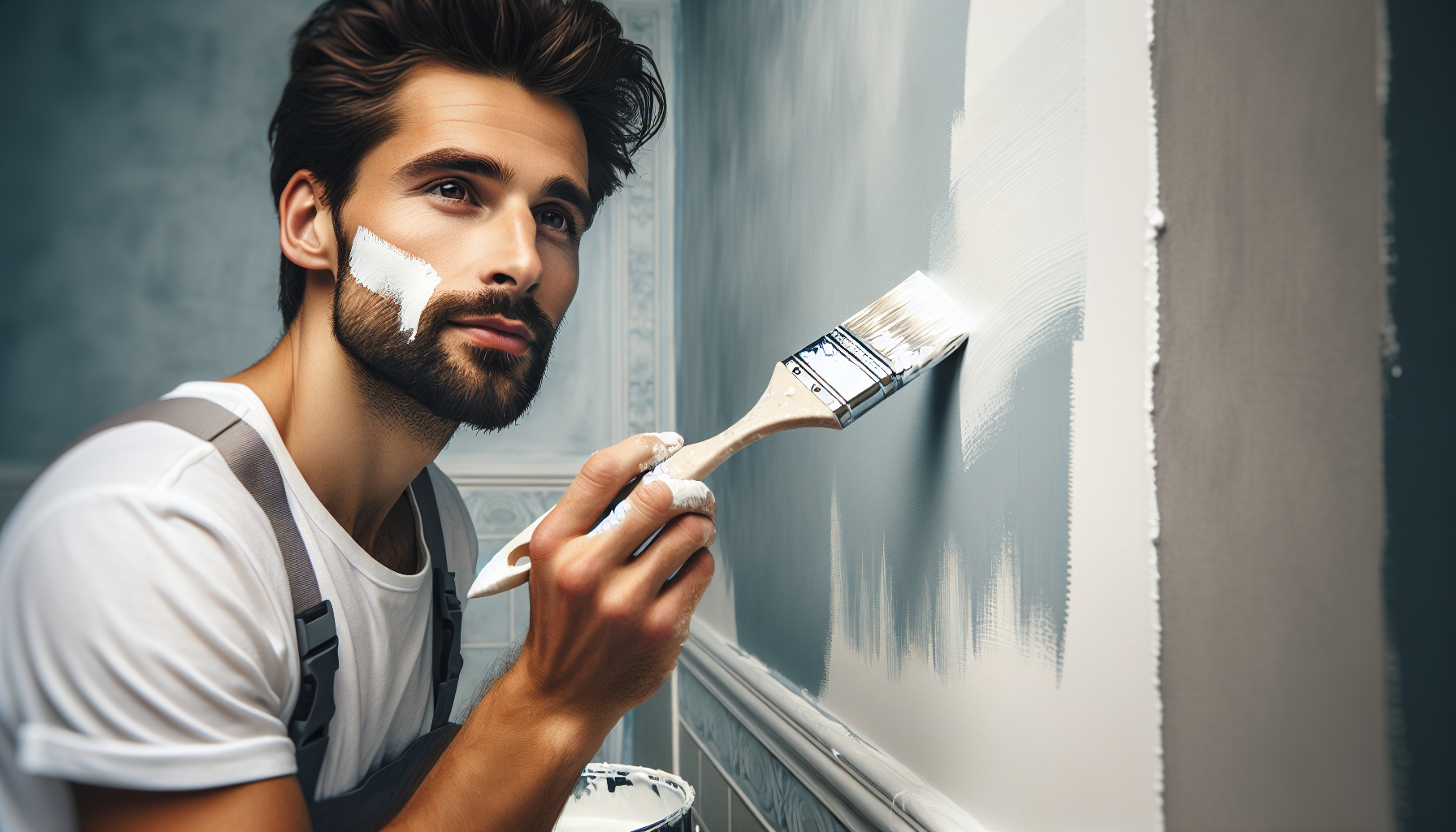
Having established a basic understanding of the types of paint and top brands, it’s time to consider the key factors that play a role when selecting bathroom paint. These factors include moisture resistance, mold and mildew prevention, and color and finish options.
These considerations hold significance not only for aesthetic purposes but also for ensuring the durability and longevity of your bathroom paint. Remember, a bathroom is a high-moisture environment that can quickly degrade the quality of your paint if not chosen wisely.
Moisture Resistance
Moisture resistance is a crucial feature to look for in bathroom paint. It helps protect your walls from water damage and dirt buildup, ensuring the longevity and durability of your paint job.
Moisture-resistant paints work by creating a protective barrier on your wall surfaces, effectively preventing the penetration of moisture and water vapor. This is achieved by utilizing:
- Waterproof coatings
- Pigments
- Solvents
- Resins
in the paint formulation. The less porous the paint coating, the less moisture it allows to pass through, resulting in improved protection against water damage.
Mold and Mildew Prevention
Mold and mildew prevention is another critical factor to consider when choosing bathroom paint. Bathrooms are high-humidity environments where mold and mildew can easily develop, causing not only health issues but also damage to your walls and paint.
Paints with anti-microbial additives and mildew-resistant properties can effectively hinder the growth of mold spores, ensuring that your walls stay clean and fresh for a longer time. Such paints not only prevent mold growth but also resist stains and facilitate easy cleaning, making them suitable for high-humidity areas like bathrooms.
Color and Finish
The color and finish of your bathroom paint can greatly impact the overall appearance and feel of your bathroom. While it might be tempting to choose a color based solely on your personal preference, it’s important to consider the influence of color on the perceived size of your bathroom. Lighter colors generally make a room feel larger, while darker colors can make it feel smaller.
The finish of your paint is also important. Glossy finishes are durable, easy to clean, and moisture-resistant, making them ideal for bathrooms. Matte or eggshell finishes, on the other hand, can help conceal wall imperfections but may not be as moisture-resistant. Therefore, it’s essential to balance your aesthetic preferences with the practical requirements of a bathroom environment.
Painting Tips for Long-Lasting Bathroom Walls

Having chosen the right paint for your bathroom, we can now discuss some painting tips that can contribute to a durable finish. Painting a bathroom is more than just slapping on a coat of paint. It involves careful preparation, proper ventilation, and regular maintenance and cleaning.
By following these tips, you’ll not only achieve a beautiful result but also ensure that your paint job stands the test of time. Whether you’re renovating your existing bathroom or painting a new one, these tips will help you navigate the process and achieve a professional-looking result.
Surface Preparation
Proper surface preparation is an essential step before you commence painting. This involves cleaning your walls, removing any old paint or wallpaper, fixing any damages, and priming your painted surfaces.
Cleaning your walls can be done using a few simple steps:
- Use a mild detergent or an all-purpose cleaner to remove any dirt or grime from the walls.
- Sand the walls to achieve a smooth surface and ensure that your paint adheres properly.
- Apply a primer to create a uniform surface that allows the paint to adhere properly and last longer.
Following these steps will help you achieve a clean and professional-looking finish when painting your walls.
Proper Ventilation
Maintaining adequate ventilation is vital during the painting process. It not only speeds up the drying process but also helps to reduce the accumulation of toxic fumes from the paint.
To ensure proper ventilation, follow these steps:
- Open doors and windows for natural air circulation.
- Use a portable fan or an exhaust fan to help remove the fumes.
- After the painting is done, maintain the ventilation for at least 24 to 48 hours to allow the paint to dry properly.
Maintenance and Cleaning
By regularly maintaining and cleaning your bathroom walls, you can significantly prolong the lifespan of your bathroom paint. This involves cleaning your walls at least once a year or more frequently depending on usage and location.
For cleaning, use a mild detergent or an all-purpose cleaner. Avoid using harsh chemicals or abrasive cleaners as they can damage the paint. For stubborn stains, a melamine sponge can be used. And remember, always use a suitable paint finish for easier maintenance.
Summary
Choosing paint for bathrooms involves more than just picking a color you like. From understanding the different types of paints and their properties, considering top bathroom paint brands, to acknowledging key factors such as moisture resistance, mold, and mildew prevention, and the color and finish of the paint - each aspect plays a critical role in ensuring a durable, long-lasting, and aesthetically pleasing bathroom paint job.
Remember, the bathroom is a unique space within your home, subject to high levels of humidity and moisture. By making a well-informed decision and following the painting tips provided here, you can ensure a successful bathroom painting project that stands the test of time and enhances the overall appeal of your bathroom.
Frequently Asked Questions
What is the best paint to use in a bathroom?
The best paint to use in a bathroom is semi-gloss paint, as it repels moisture and is easy to clean. You can also consider using satin paint for high-traffic areas and regular cleaning.
What kind of paint does Sherwin-Williams use in bathrooms?
Sherwin-Williams uses high-quality paints like their Emerald line, specifically designed for high-moisture areas, in bathrooms.
What is the best ceiling paint for a high-moisture bathroom?
The best ceiling paint for a high-moisture bathroom is either a semi-gloss or satin finish, as they are easier to clean and offer better moisture resistance than flat finishes. This makes them the most suitable choice for bathroom conditions.
What's the difference between latex and oil-based paints?
In conclusion, latex paint is more environmentally friendly and has lower VOC emissions, while oil-based paint offers greater durability but releases high levels of harmful VOCs. Choose the paint type based on your environmental concerns and desired level of durability.
What factors should I consider when choosing bathroom paint?
When choosing bathroom paint, consider moisture resistance, mold and mildew prevention, and the paint color and finish for a durable and visually appealing option.



